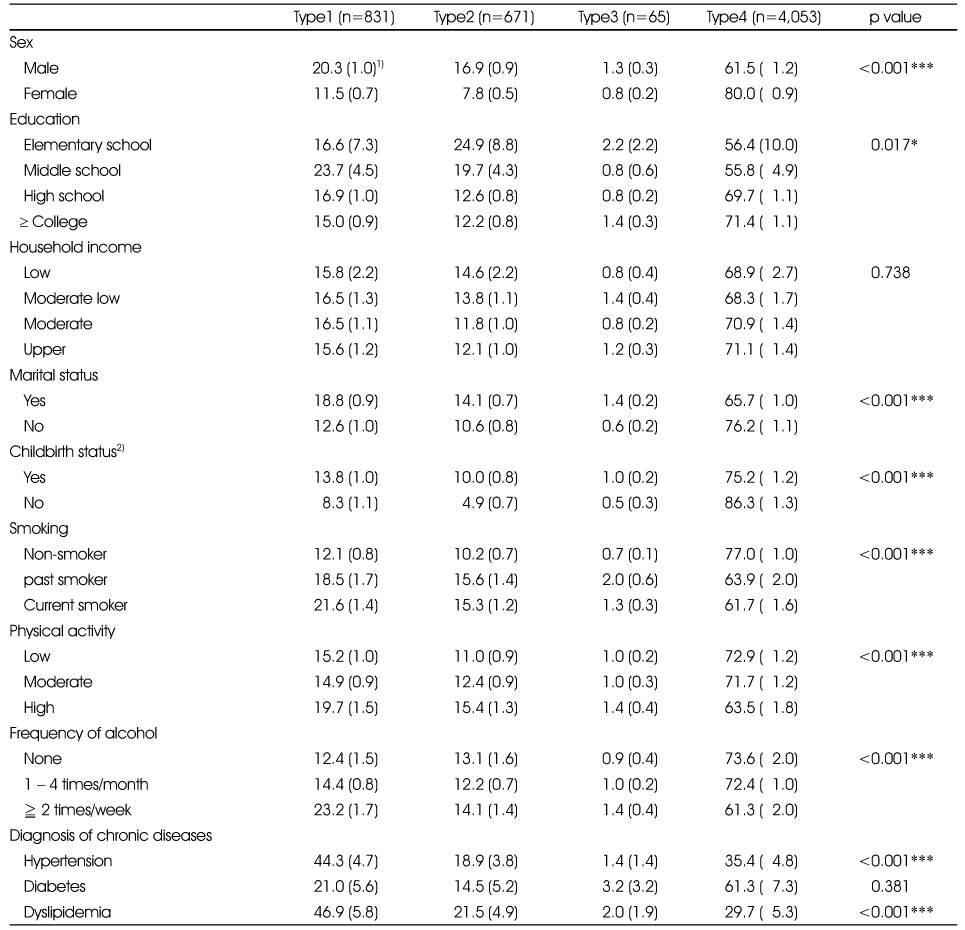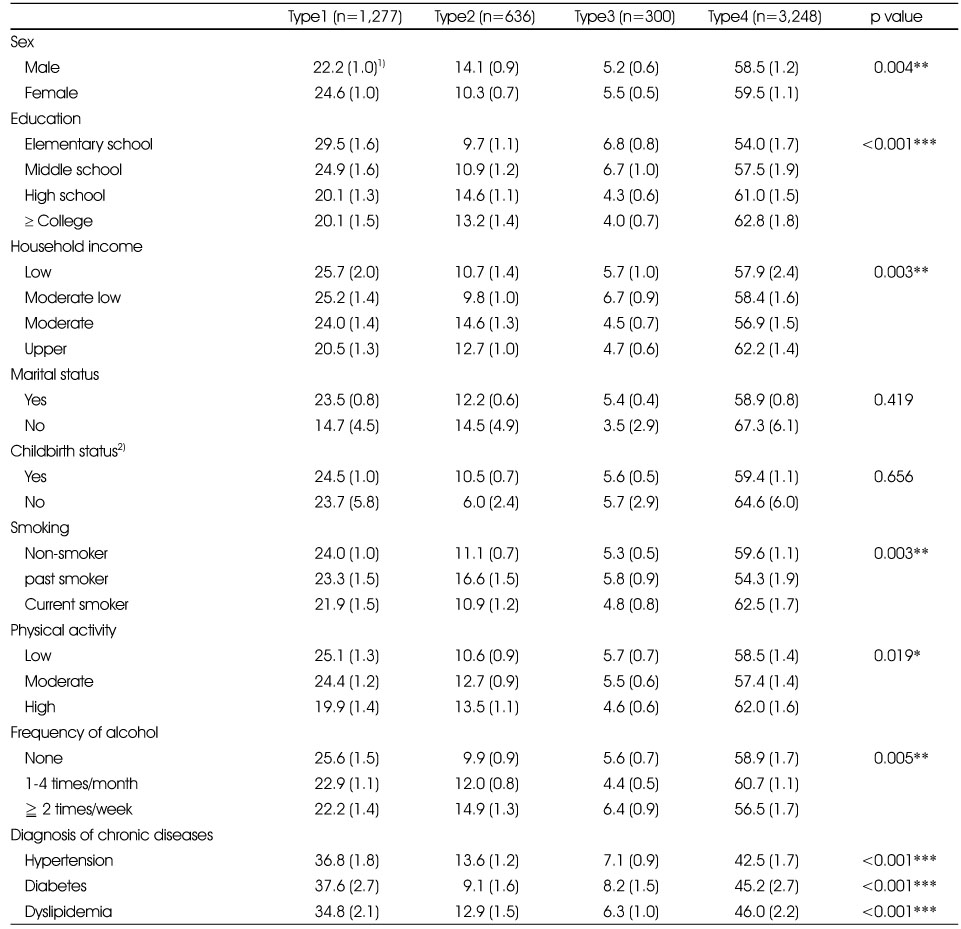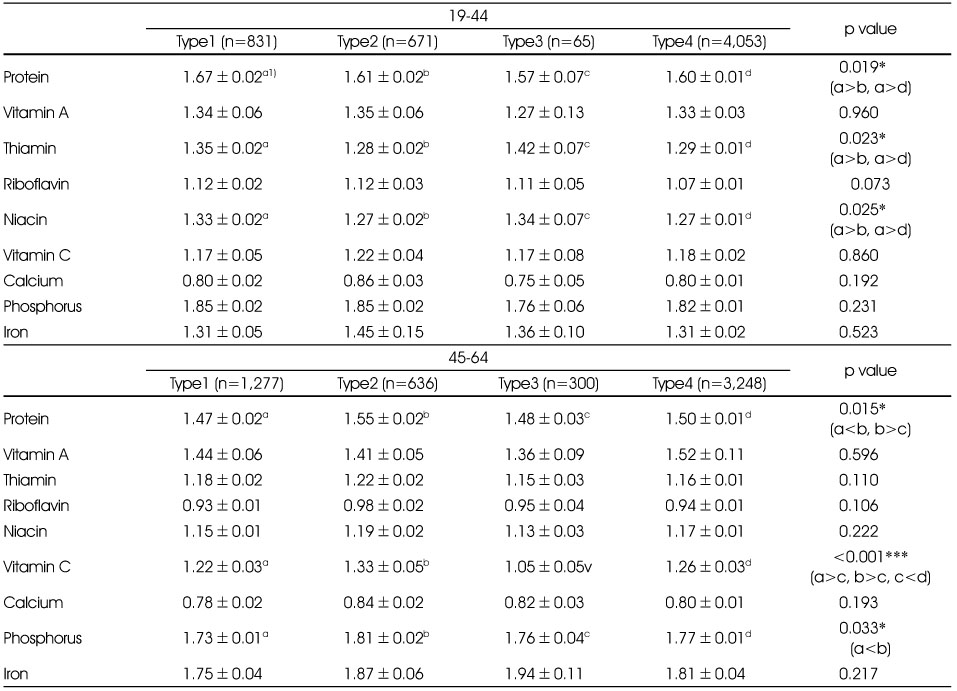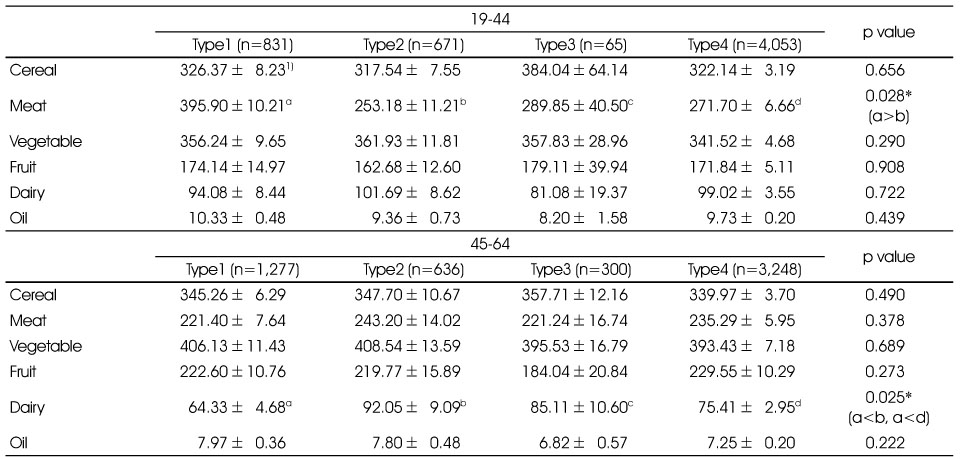References
1. Ministry of Health and Welfare & Korea Centers for Disease Control and Prevention. Korea Health Statistics 2012: Korea National Health and Nutrition Examination Survey (KNHANES V-3) [Internet] 2013. cited 2016 Jan 13. Available from:
https://knhanes.cdc.go.kr/knhanes/index.do.
2. Ko JH, Kim KJ. Comparison of body composition according to the obesity types based upon percent body fat, BMI and waist circumference in women. J Growth Dev 2007;15(1):1–7.
3. Zhu S, Wang Z, Heshka S, Heo MS, Faith M, Heymsfield S. Waist circumference and obesity-associated risk factors among whites in the third National Health and Nutrition Examination Survey: Clinical action thresholds. Am J Clin Nutr 2002;76(4):743–749.
4. Ardern C, Katzmarzyk P, Janssen I, Ross R. Discrimination of health risk by combined body mass index and waist circumference. Obes Res 2003;11(1):135–141.
5. Lee YE, Park JE, Hwang JY, Kim WY. Comparison of health risks according to the obesity types based upon BMI and waist circumference in Korean adults: The 1998-2005 Korean National Health and Nutrition Examination Surveys. Korean J Nutr 2009;42(7):631–638.
6. Bae YJ. Evaluation of nutrient and food intake status, and dietary quality in Korean female adults according to obesity: Based on 2007-2009 Korean National Health and Nutrition Examination Survey. J Nutr Health 2012;45(2):140–149.
7. Kim MH, Lee JC, Bae YJ. The evaluation study on eating behavior and dietary quality of elderly people residing in Samcheok according to age group. Korean J Community Nutr 2009;14(5):495–508.
8. Arroyo Izaga M, Rocandio PA, Ansotegui AL, Pascual AE, Salces BI, Rebato OE. Diet quality, overweight and obesity in university students. Nutr Hosp 2005;21(6):673–679.
9. Wolongevicz DM, Zhu L, Pencina MJ, Kimokoti RW, Newby PK, D'Agostino RB, et al. Diet quality and obesity in women: the Framingham Nutrition Studies. Br J Nutr 2010;103(8):1223–1229.
10. Jennings A, Welch A, van Sluijs EM, Griffine SJ, Cassidy A. Diet quality is independently associated with weight status in children aged 9-10 years. J Nutr 2011;141(3):453–459.
11. Kim MS, Kweon DC, Bae YJ. Evaluation of nutrient and food intake status, and dietary quality according to abdominal obesity based on waist circumference in Korean adults: Based on 2010-2012 Korean National Health and Nutrition Examination Survey. J Nutr Health 2014;47(6):403–415.
12. Jayawardena R, Byrne NM, Soares MJ, Katulanda P, Yadav B, Hills AP. High dietary diversity is associated with obesity in Sri Lankan adults: an evaluation of three dietary scores. BMC public Health 2013;13(1):314.
14. Lee S, Park HS, Kim SM, Kwon HS, Kim DY, Kim DJ, et al. Cut-off points of waist circumference for defining abdominal obesity in the Korean population. Korean J Obes 2006;15(1):1–9.
15. Bergier J, Kapka-Skrzypczak L, Bilinski p, Paprzycki P, Wojtyla A. Physical activity of polish adolescents and young adults according to IPAQ: a population based study. Ann Agric Environ Med 2012;19(1):109–115.
16. Choi HM, Kim JH, Lee JH, Kim CI, Song KH, Jang KJ, et al. 21st Century nutrition 4th edth ed. Paju: Kyomunsa; 2011. p. 5.
17. Hansen RG. An index of food quality. Nutr Rev 1973;31(1):1–7.
18. Oh SY. Analysis of methods on dietary quality assessment. Korean J Community Nutr 2000;5(2S):362–367.
19. Bae YJ. Evaluation of nutrient intake and anthropometric parameters related to obesity in Korean female adolescents according to dietary diversity score: from the Korean National Health and Nutrition Examination Surveys, 2007-2009. Korean J Community Nutr 2012;17(4):419–428.
20. Um JS, Park MY, Chung YJ. Composition of food groups appropriate for evaluation of diet quality of Korean adolescents based on Kant's minimum amount. Korean J Nutr 2006;39(6):560–571.
21. Kant AK, Block G, Schatzkin A, Ziegler RG, Nestle M. Dietary diversity in the US population, NHANES II, 1976-1980. J Am Diet Assoc 1991;91(12):1526–1531.
22. Korean Nutrition Society. Dietary Reference Intakes for Koreans 2010 1st edth ed. 2010.
23. Park S, Park MS, Ko JA. The association between carbohydrate intake and waist circumference. Korean J Obes 2008;17(4):175–181.
24. Lee TY, Yoo HJ, Joo NS. Daily calcium intake and obesity in middle-aged Koreans. Korean J Obes 2009;18(2):59–64.
25. Lee JY, Chang HS, Seo KH, Lee BS, Nam BS. Diet therapy Seoul: Shinkwang Publishing Co.; 2007. p. 231.
26. Chang HS. A study on weight control behaviour, eating habits and health-related life habits according to obesity degree by body fat percentage among middle-aged women in Gunsan city. Korean J Community Nutr 2010;15(2):227–239.
27. Bae YJ. Evaluation of nutrient and food intake status, and dietary quality in Korean female adults according to obesity: Based on 2007-2009 Korean National Health and Nutrition Examination Survey. Korean J Nutr 2012;45(2):140–149.
28. Kim SH, Kim JY, Ryu KA, Sohn CM. Evaluation of the dietary diversity and nutrient intakes in obese adults. Korean J Community Nutr 2007;12(5):583–591.
29. Rosell M, Johansson G, Berglund L, Vessby B, de Faire U, Hellenius ML. Associations between the intake of dairy fat and calcium and abdominal obesity. Int J Obes Relat Metab Disord 2004;28(11):1427–1434.
30. Marques-Vidal P, Goncalves A, Dias CM. Milk intake is inversely related to obesity in men and in young women: data from the Portuguese Health Interview Survey 1998-1999. Int J Obes (Lond) 2006;30(1):88–93.
31. Lee CJ, Joung HJ. Milk intake is associated with metabolic syndrome: Using data from the Korea National Health and Nutrition Examination Survey 2007-2010. Korean J Community Nutr 2012;17(6):795–804.








